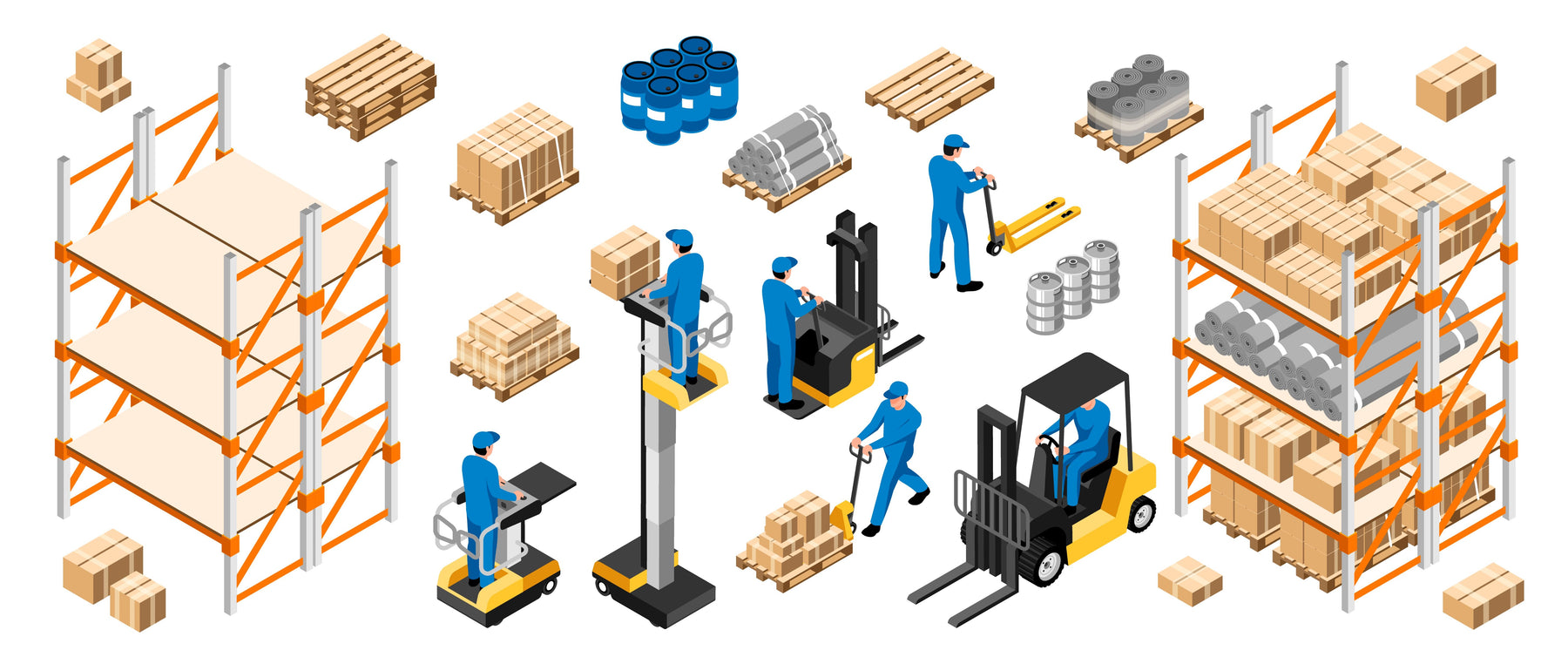
Top 5 Essential Tips for Choosing the Right Material Handling Equipment
Introduction:
In the world of manufacturing and logistics, choosing the right material handling equipment is crucial for ensuring efficient operations and maximizing productivity. The diverse range of material handling equipment available can make the selection process overwhelming. However, by considering key factors and understanding the specific requirements of the job at hand, you can make an informed decision. In this comprehensive guide, we will walk you through the steps to choose the right material handling equipment for your needs.
1. Assess Your Needs:
Before diving into the selection process, start by thoroughly assessing your material handling needs. Consider the following factors:
a) Type of Materials: Determine the types of materials you will be handling. Are they heavy, bulky, or delicate? Do they require special care or specific handling techniques? Understanding the characteristics of the materials will help narrow down the suitable equipment options.
b) Weight and Dimensions: Evaluate the weight and dimensions of the materials. This information will help determine the lifting capacity, size, and configuration of the equipment required.
c) Work Environment: Consider the specific work environment where the equipment will be used. Is it indoors or outdoors? Are there any space constraints, such as narrow aisles, uneven terrains or low ceilings? Assessing the work environment, will aid in selecting equipment that can operate effectively within those conditions.
d) Workflow and Volume: Analyze the workflow and volume of material handling operations. Determine the frequency of material movement, the distance to be covered, and the required speed. This will influence the choice of equipment, such as conveyor systems or automated guided vehicles (AGVs), to ensure efficient material flow.
2. Identify Equipment Options:
Once you have a clear understanding of your needs, identify the equipment options that align with those requirements. Here is some common material handling equipment categories to consider:
a) Forklifts: Forklifts are versatile machines suitable for lifting and moving heavy loads in warehouses, manufacturing facilities, and distribution centers. Forklifts are versatile and widely used in various industries for transporting heavy loads over short distances. Choose the appropriate forklift type (e.g., counterbalance, reach, or pallet truck) based on the weight, size, and characteristics of the materials. They come in different configurations, such as counterbalance forklifts, reach trucks, or powered pallet trucks, and can handle a range of materials on pallets or in containers.

Image 02: Forklift
Credits: Images from pixabay by OpenClipart-Vectors : https://pixabay.com/vectors/box-car-forklift-loader-vehicle-159302/
b) Conveyor Systems: Used for automated movement of materials along a predetermined path, suitable for assembly lines, distribution centers, or airports. Conveyor systems automate material movement and are ideal for high-volume operations. Choose from various types, such as roller conveyors, belt conveyors, or gravity conveyors, based on the specific application and material characteristics.

Image 03: Conveyor System
Credits: Images from pixabay by falco : https://pixabay.com/photos/factory-plant-industrial-hall-1137993/
c) Platform Trolleys, Pallet Jacks and Stackers: Perfect for moving palletized loads over short distances, commonly used in warehouses or retail environments. Pallet jacks and stackers are useful for lifting and maneuvering palletized loads. Assess the weight capacity, lift height, and maneuverability features when selecting these equipment options. Platform trolleys, hand trucks and stackers are practical for frequent transportation of materials in areas with limited space or narrow aisles.


Image 04: Lift Tables
Credits:<img src="https://www.kindpng.com/picc/m/104-1040422_backsaver-lift-table-scissor-lift-table-hd-png.png" alt="Backsaver Lift Table - Scissor Lift Table, HD Png Download@kindpng.com">
e) Cranes and Hoists: Essential for lifting and positioning heavy loads in construction, manufacturing, or shipyards. Cranes and hoists are suitable for heavy-duty lifting operations. Consider the lifting capacity, reach, and mobility options (e.g., overhead cranes or mobile cranes) when choosing this equipment.

Image 05: Cranes and Hoists
Credits: Images from pixabay by oscarfvp: https://pixabay.com/photos/bridge-crane-overhead-cranes-hoist-2854299
f) Automated Systems: Self-driving vehicles used for transporting materials in warehouses or factories. Automation technologies, such as AGVs, robotic arms, or automated storage and retrieval systems (AS/RS), can significantly enhance material handling efficiency. They are often used in manufacturing facilities or warehouses for frequent transportation of goods between workstations, storage areas, or shipping docks. Evaluate the specific automation needs and consider the integration capabilities with existing systems.

Image 06: Automated Systems
Credits: Images from pixabay by Mentagi: https://pixabay.com/illustrations/robot-arm-machinery-structure-6668695/
3. Consider Equipment Specifications:Once you have identified the suitable equipment types, consider their specifications to ensure compatibility with your specific job requirements. Some key factors to evaluate include:
a) Capacity: Determine the maximum weight capacity the equipment can handle to ensure it meets your material handling needs.b) Dimensions: Consider the equipment's size, including its length, width, and height, to ensure it can navigate through your facility's doorways, aisles, or storage areas.
c) Power Source: Depending on the equipment, consider the power source required, such as electric, hydraulic, or manual, and evaluate its suitability for your workspace.
Beyond the equipment type, consider additional features and specialized requirements that may be essential for your operations. Some considerations include:
a) Safety Features: Prioritize equipment with robust safety features, such as anti-tip mechanisms, emergency stop buttons, and visibility enhancements. Look for certifications and compliance with safety standards to ensure the equipment meets industry regulations.
b) Ergonomics: Choose equipment that prioritizes ergonomic design to reduce the risk of injuries and improve operator comfort. Features like adjustable handles, cushioned grips, and intuitive controls can enhance usability.
c) Maintenance and Serviceability: Evaluate the maintenance requirements, availability of spare parts for the equipment and technical support for the chosen equipment. Reliable after-sales service and access to spare parts are essential for minimizing downtime and ensuring optimal equipment performance. Consider the ease of servicing, warranty options, and the reputation of the manufacturer or supplier for reliable support.
5. Budget Considerations:
While choosing the right material handling equipment, it's essential to consider the budget constraints. Balance the upfront costs with long-term benefits and factor in ongoing maintenance, operational costs, and potential return on investment. Prioritize equipment that offers the best value for your specific needs and aligns with your budgetary limitations.
Conclusion:
Choosing the right material handling equipment is crucial for optimizing operations, improving productivity, and ensuring workplace safety. By assessing your needs, considering equipment options, evaluating features and specialized requirements, and keeping budget considerations in mind, you can make an informed decision. Inaithiram offers you the premium quality material handling equipment satisfying the above all the criteria with after sales service at best price. Selecting the right material handling equipment will contribute to a more efficient and successful material handling process, benefiting your business in the long run.




